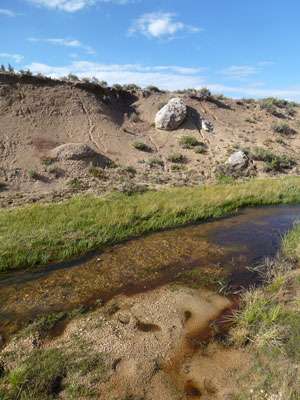California's state fish can benefit from restoring and protecting streamside vegetation in high elevation meadows

Rising temperatures can create stressful and possibly lethal stream habitat for native trout. To help understand the interactive effects of climate warming and livestock grazing on water temperature, researchers from the Pacific Southwest Research Station (PSW) and University of California, Berkeley, conducted a six-year study documenting high elevation water temperatures in areas of the Golden Trout Wilderness. The wilderness area is located within the Sequoia and Inyo national forests in California and was designated Wilderness primarily to protect the native California golden trout, the state's official fish.
To understand the impact of land use on water temperature, researchers measured streamside vegetation and monitored water temperature in three meadow streams where livestock had three different types of stream access between 2008 and 2013. Key findings include:
- Water temperatures approached the upper limit of tolerance for the golden trout in some areas of suitable habitat.
- Water temperatures were cooler in ungrazed meadow areas with willows.
- Riverbank vegetation was both larger and denser where livestock were not present.
In the study, researchers found that land use can interact with climate change to intensify warming in high elevation meadow streams, and protecting and restoring streamside vegetation can help keep streams cool for the California golden trout.
"Our study clearly shows the role of streamside vegetation in maintaining low stream temperatures," said Kathleen Matthews, a PSW research scientist and co-author of the study. "Enhancing and protecting streamside vegetation may ensure that streams have the resiliency to withstand future climate warming that can lead to stressful and possibly lethal stream temperatures for golden trout."
, "Mediating Water Temperature Increases Due to Livestock and Global Change in High Elevation Meadow Streams of the Golden Trout Wilderness," was released in the journal PLOS One.
Journal information: PLoS ONE
Provided by USDA Forest Service


















